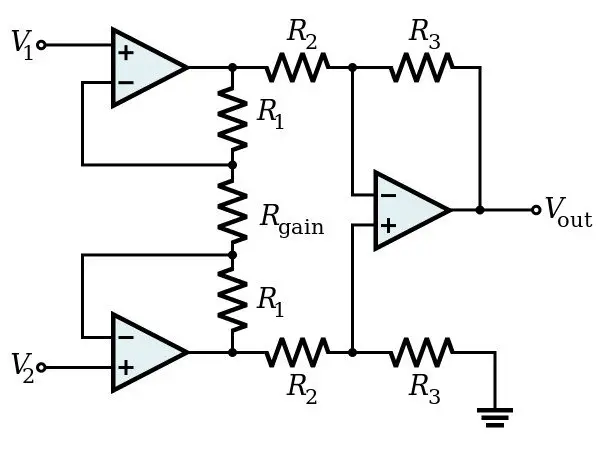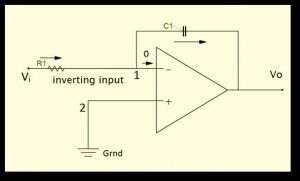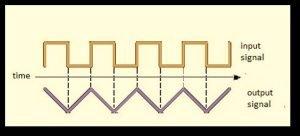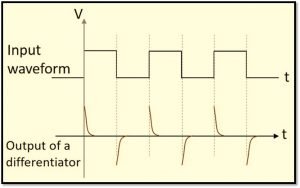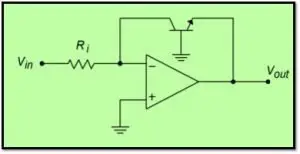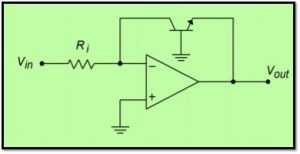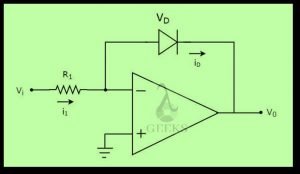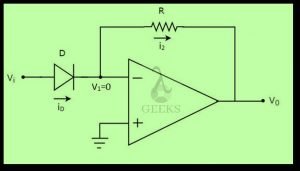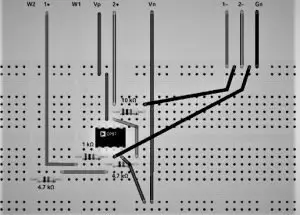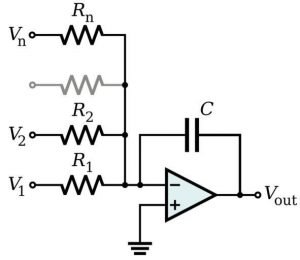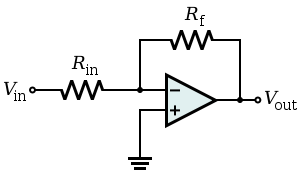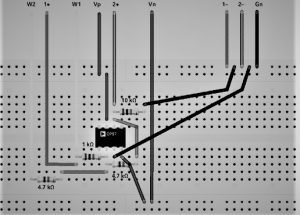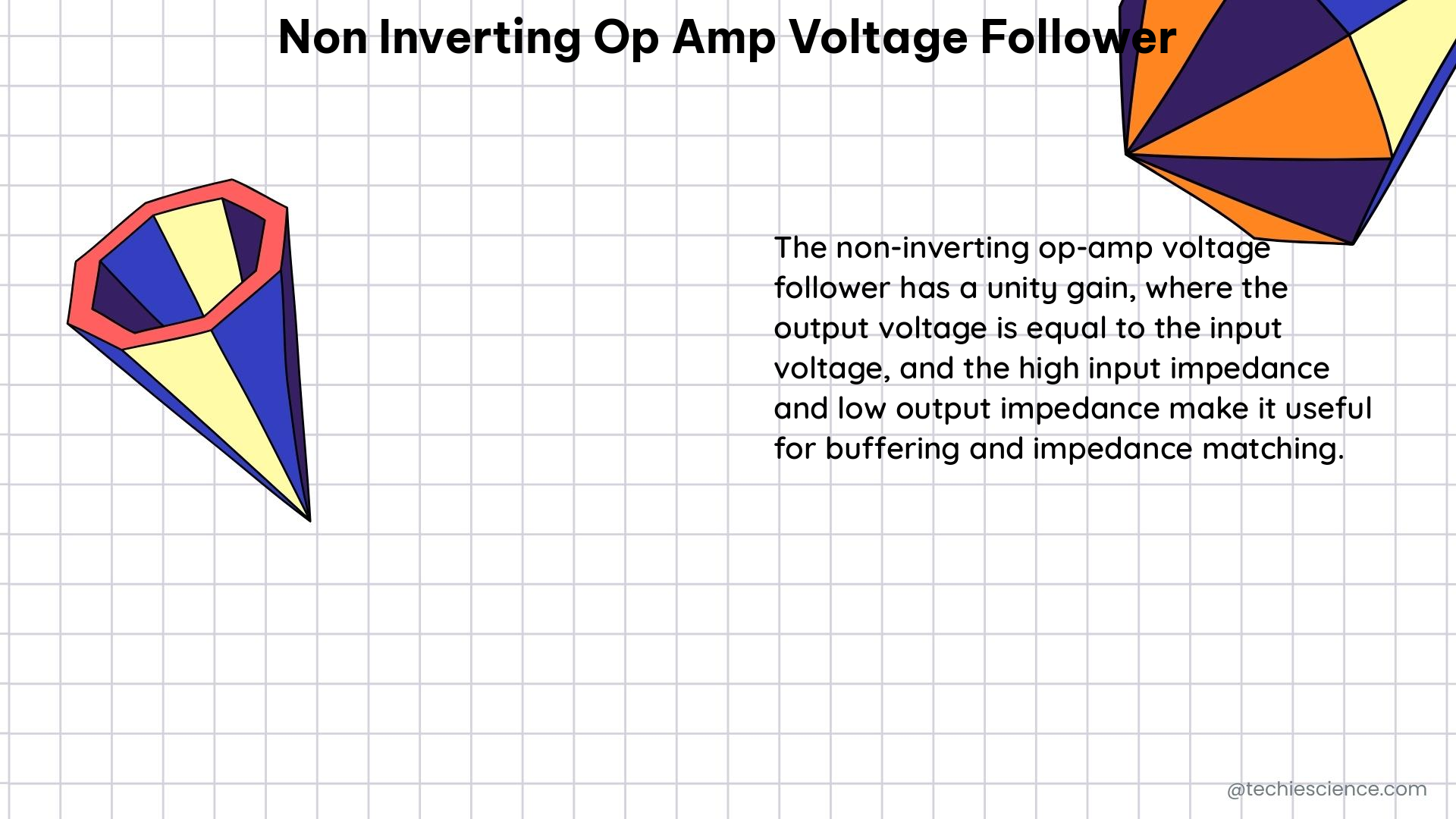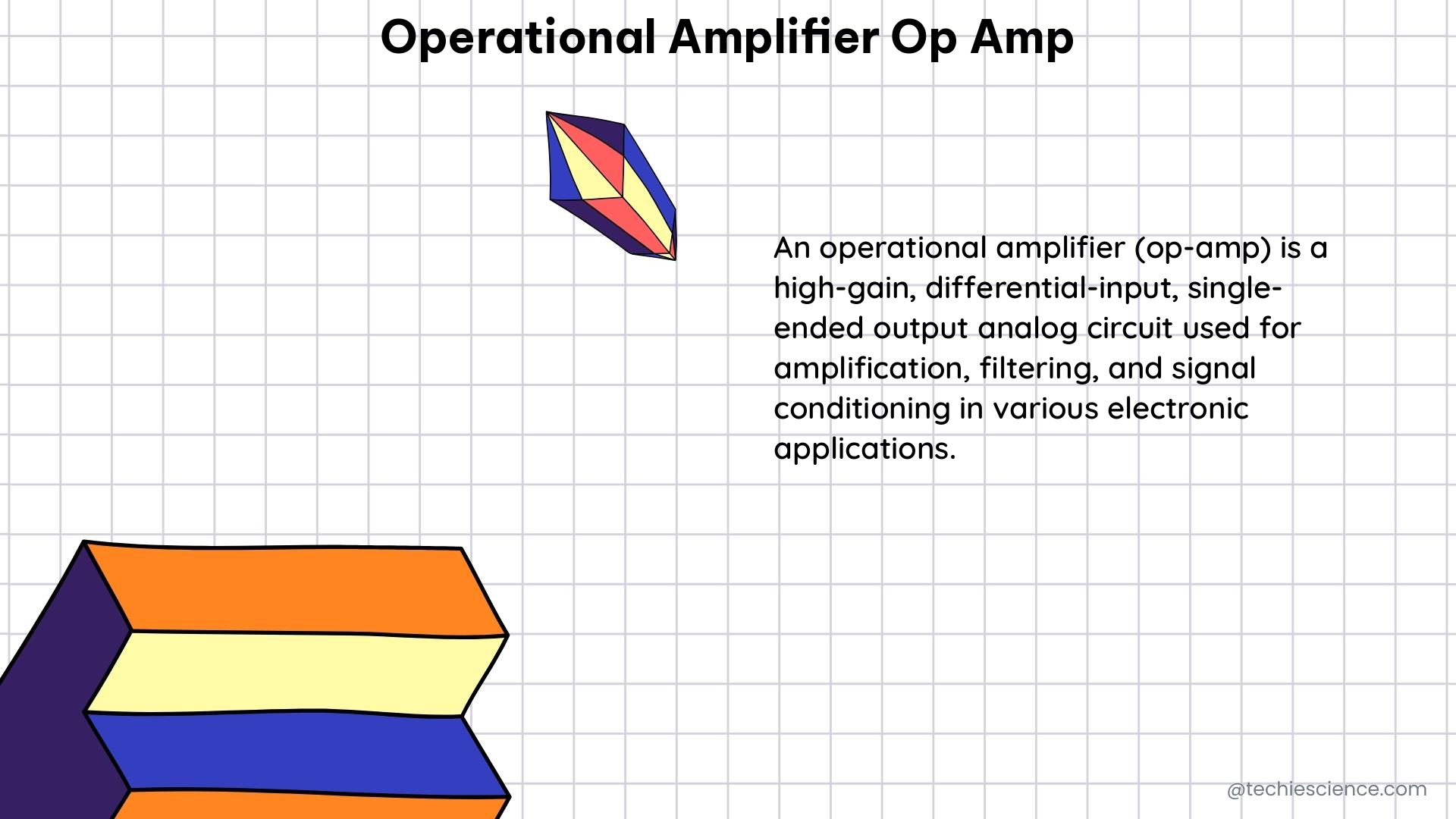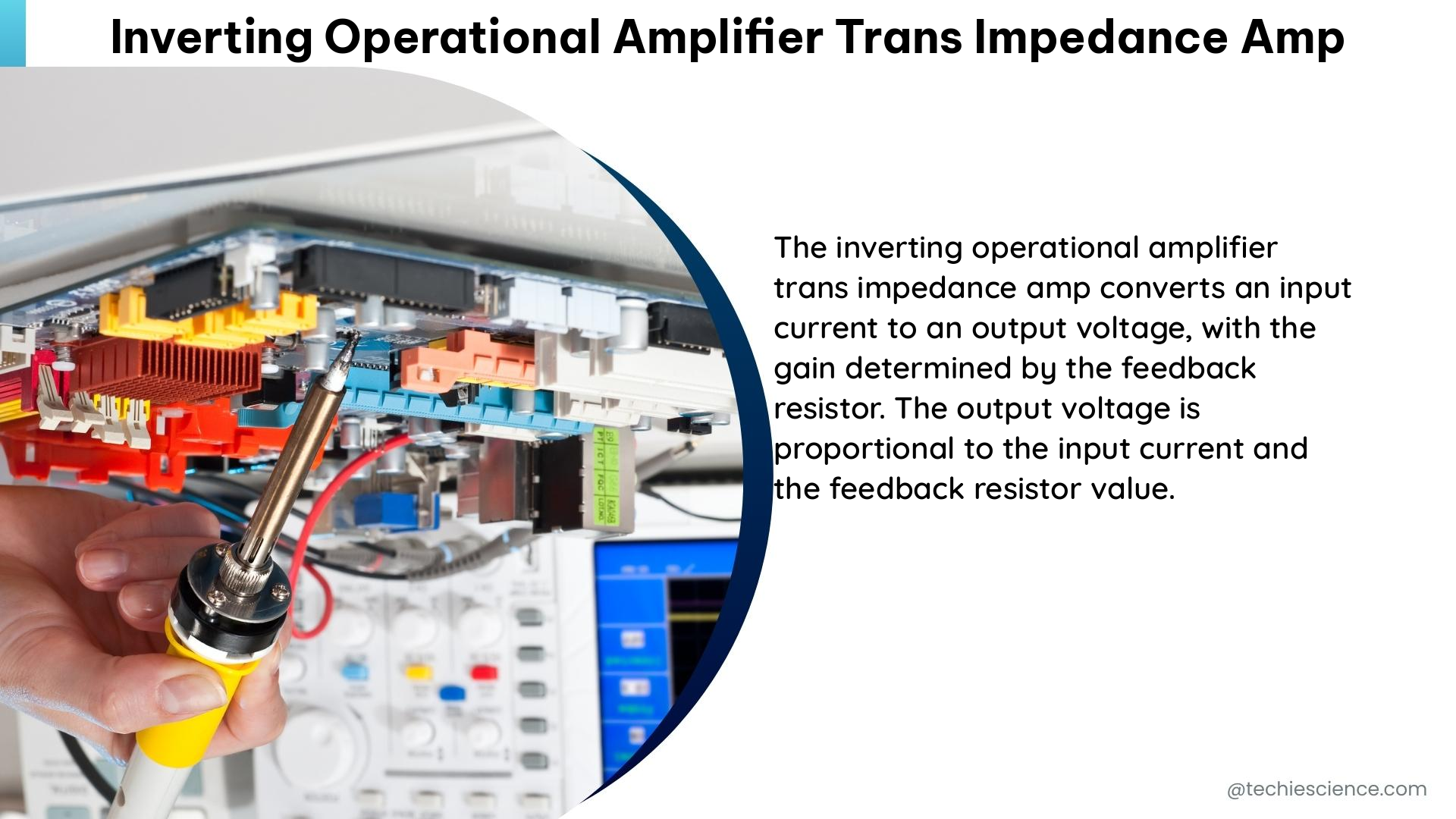Introduction to Instrumentation Amplifier
An instrumentation amplifier is a particular type of amplifier which is derived from meeting some specific purposes. Instrumentation amplifier provides higher gain, high CMRR (common-mode rejection ratio) and high input impedances. So, we can say that it tries to possess most of the characteristics of an ideal op-amp.
An instrumentation amplifier is often called as In-Amp or InAmp. This article will discuss in detail about circuit, design, formulas, and equations related to the Instrumentation amplifier.
3 Op-Amp Instrumentation Amplifier
A typical Instrumentation amplifier consists of 3 regular op-amps. Two of them are used in a single-stage, whereas the other is used to separate a stage. All three amplifiers work as a differential amplifier, and all of them are connected with negative feedbacks. As instrumentation amplifiers are consisting of 3 amplifiers, they are often called three op-amp amplifier.
Instrumentation Amplifier Circuit
The below image represents a typical circuit diagram of an instrumentation amplifier. Carefully observe the picture as we are going to reference the photo for the rest of the article.

The input voltages are Vi1 and Vi2.
The resistances are R1 (2), R2 (2), R3, R4(2).
The voltage at A and B terminals are VA and VB, respectively.
The current through the R4, R3, and R4 branch is I.
The output of the Amplifier -1 is the Vo1, and that of amplifier -2 is Vo2.
The output of the 3rd amplifier is Vout.
Instrumentation Amplifier Design
An instrumentation amplifier is a combination of 3 typical amplifiers. They are connected in a specific order to build an instrumentation amplifier. We can segregate the instrument amplifier design into two-part.
The first part is “Two input and two output”. Two standard operational amplifiers are connected, as shown in the amplifier circuit figure. Both of them are provided with negative feedback as it stabilizes the circuit more. The output of both the amplifier is connected with three resistors.
The second part is a basic “Differential Amplifier”. The output of both the previous amplifier acts as input for the last amplifier. Outputs are connected with two identical valued resistors with the amplifier. The positive section is grounded, and negative feedback is associated with the negative terminal and the o/p of this op-amp is the final output of the instrument amplifier.
Instrumental Amplifier Derivation
Let us derive the functional equations and formulas for the instrumentation amplifier. To derive the equations, let us know what happens inside the whole instrument amplifier. As we have previously mentioned, the separation of two stages so, we will calculate it partly.
At the first stage, the input is provided to the non-inverting terminals of both the amplifiers. The amplifier is differential amplifiers. So, they find out the difference between the given input voltages. Now, refer to the circuit diagram; the input voltages are Vi1 and Vi2. The inverting terminal of the circuit is connected with negative feedback from the output of the amplifiers. Let us say the inverting terminals of both the amplifiers are having potentials VA and VB, respectively. They appear at the node connecting with the resistance lines and branch.
Considering the virtual short-circuit works, the A and B terminal receive the same amount of voltage as the inputs. So, we can say, VA = Vi1, VB = Vi2. The whole stage works like a differential amplifier. That means the difference between the two inputs voltage will be amplified at the output. The output will be again the differences between the two outputs voltage. That can be expressed as follow:
Vo1 – Vo2 = k (Vi1 – Vi2)
Here k is the gain of the amplifier.
At stage two, the difference of the amplifiers is fed as the input for the amplifier. The amplifier at this stage simply works like a typical amplifier. The resistances are connected with the information are of the same values as the differential amplifiers’ requirement. The inverting terminal is associated with the ground, and the amplifier is though of having virtual grounds. In the next section, we will derive the mathematical calculations for an instrument amplifier.
Instrument Amplifier Equation
The input voltages are Vi1 and Vi2.
If the virtual shorting works, then VA = Vi1 and VB = Vi2
Now, there is no current flow from A and B to the resistance branch. There is only a typical current through the branch, and that is current I. ‘I’ is given as:
I = (Vi1 – Vi2) / R3.
The current ‘I’ can also be calculated using the node analysis. It comes as follow.
I = (Vo1 – Vo2) / (R4 + R3 + R4)
Or, (Vo1 – Vo2) = (Vi1 – Vi2) * (R3 + 2R4) / R3
The above equation explains the operation of the first stage. For the second stage, the op-amp’s output is the final output of the instrumentation amplifier.
From the operation of a difference amplifier, we can write that,
Vout = (R2 / R1) x (Vo2 – Vo1)
Or, Vout = (R2 / R1) x (R3 + 2R4) x (Vi1 – Vi2) / R3
This is the instrumentation amplifier equation or the output equation of an instrumentation amplifier. Now, look at the derivation section of this article. Vo1 – Vo2 = k (Vi1 – Vi2). The obtained equation is in the same format.
Instrumentation Amplifier Gain
The amplifier’s gain is referred to as the factor by which the amplifier amplifies the input signal. The resistance values represent the gain of an instrumentation amplifier. The gain also depends on the type of feedbacks being used. The positive feedback provides higher gain, whereas negative feedback provides better stabilities of the system.
The instrumentation amplifier’s general equation is Vo1 – Vo2 = k (Vi1 – Vi2), representing the gain as: ‘k’.
Instrumentation Amplifier Gain Formula
As mentioned earlier, the amplifier gain can be derived from the output equation of the amplifier. The output equation is as follow:
Vout = (R2 / R1) x (R3 + 2R4) x (Vi1 – Vi2) / R3
Comparing this equation with the following equation:
Vo1 – Vo2 = k (Vi1 – Vi2)
We can write,
k = (R2 / R1) x (R3 + 2R4) / R3, this is the instrumentation amplifier gain formula.
Instrumentation Amplifier IC
Typical amplifiers are packaged through Integrated Circuit or ICs. So, if we want to build an Instrumental amplifier using regular op-amps, we have to use op-amp ICs. There is also a separate IC available for Instrumentation amplifiers. There is no need for connecting one op-amp with another. These types of ICs are used commercially where more numbers of ICs are used at a time.
Instrumentation Amplifier Module
Instrumentation amplifiers modules are a combination of a few electronic devices, and the main of them is the Instrumentation Amplifiers. Two of the excellent instrumentation amplifiers are AD623, AD620.
The modules are used explicitly in medical engineering devices of low powers, low power signal amplifier, thermocouples. Some of the characteristics are – a) It provides higher gain, b) Better stability, c) Low power d) High Accuracy.
Instrumental Amplifier IC List
As an instrumentation amplifier can be build using different ICs, we have made a list of all ICs that can be used for Instrumental Amplifiers. The IC numbers are given in the list.
| Name of the IC | IC Specification | Comments |
| Instrumentation Amplifier | INA128 | Single-Chip. |
| Dual Instrumentation Amplifier | INA2128 | 16 pin IC |
| Typical Op-Amp | LM324 | IC had four amplifiers. |
| Instrumentation Amplifier | AD623 | Eight pin IC having a single instrumentation amplifier |
| Precision Instrumentation Amplifier | AD624 | 16 pin IC |
| Operational Amplifier | IC741 | Four pin IC and works as a single unit of the op-amp. |
Instrumentation Amplifier Load Cell
The performance of the instrumentation amplifier gradually increases upon connecting the load cell. The amplifier provides higher CMRR, higher input impedances and thus improves the performance. The detailed connection for the instrumentation amplifier with load cell is shown in the below image.
Instrumentation Amplifier offset voltage
Every op-amp has its offset voltage. The offset voltage is defined as the must need a voltage that must be applied between two inputs to nullify the difference between them and this offset value of every op-amp is specified in the datasheet provided by the manufacturer. For Instrumentation amplifiers, the offset voltage is significantly less, which is desirable.
Instrumentation Amplifier Output Waveform
To observe an instrumentation amplifier’s output, we have to connect it with a CRO (Cathode Ray Oscilloscope). We provide input as sine waves as two input signals, and work is measured from the last amplifier. Co-axial probes are connected with the pins to observe the output waveform. The below image depicts the output. The output is the amplified difference between the applied input voltages.

Instrumentation Amplifier transfer function
The transfer function of a system refers to the process which describes or provides output for each input. As the amplifier takes two inputs and amplifies them, the transfer function will reflect the same. The transfer function can be written as:
Vo1 – Vo2 = k (Vi1 – Vi2)
Here Vi1 and Vi2 are the two inputs, and k is the gain.
Dual Instrumentation Amplifier
A dual instrumentation amplifier is a special kind of instrumentation amplifier having great accuracy. It is designed in a certain way to provide high gain, greater accuracy from a minimal size of IC. It also has a low offset voltage. For a wider bandwidth and a connected external resistor, the dual amplifier can provide gain up to 10,000.
The INA2128 IC is used as a dual instrumental amplifier. Some of the significant Applications of dual instrumentation amplifier are sensor amplifiers, medical engineering devices, and battery-operated equipment.
Instrumentation Amplifier vs Operational Amplifier
| Points of Reference | Operational Amplifier | Instrumentation Amplifier |
| Basic Structure | Build up of Bipolar Junction Transistors or Metal Oxide Field-Effect Transistors. | The buildup of three Differential Amplifiers |
| Gain | Normal Gain | Higher Gain |
| Buffer Connection | An operational amplifier can be used to make a buffer circuit. | A buffer circuit is a part of the whole circuit. |
| IC specification | IC741 | AD623 |
Instrumentation Amplifier advantages and disadvantages
Instrumentation Amplifiers is developed to gain more advantages over typical differential amplifiers. That is why instrumentation amplifiers are used in most commercial applications. But it has some advantages too. Let us discuss some of the instrumentation amplifiers advantages and disadvantages.
Advantages
1. Accuracy and Precision in Measurement: Instrumentation amplifiers are used for testing and measurement purpose. Instrument amplifiers don’t need to match the input impedances. That is why they are so useful for testing. The better parametric values like higher CMRR, high input impedance also gain advantages.
2. Gain: Instrumentation amplifiers provide greater values for open-loop gain. It is a clearer advantage which is also an essential requirement for the amplifiers.
3. Stability of the System: Inside the Instrumentation Amplifiers, all normal op-amps are connected in negative feedback. As we know, negative feedback stabilises the system; the Instrumentation amplifier’s stability is also high.
4. Scalability: Instrumentation amplifiers are incredibly scalable. It provides the option to scale the signal at the input level. That is why the overall amplification is much greater than other amplifiers. The range for scaling is high for that reason also.
5. Accessibility: Instrumentation amplifiers come in ICs. There are eight-pin ICs are available. So, it is easier to handle and use. Also, there are not many factors to take during the amplification. The user just has to know the input signal well. Let us find the disadvantages of the instrumentation amplifiers.
Disadvantages
1. The Instrumentation amplifier suffers from the issue of long-range transmission. The amplifier tends to mix up the original signals with the noises if the input signal is sent for an extended range for communication. The issue can be resolved if the cable type can be improvised so that the noise gets cancelled at the primary stage or no noise enters the transmission line.
Instrumentation Amplifier Characteristics
Let us look at the characteristics of the instrumentation amplifiers at a glance.
- Instrumentation Amplifiers are Differential Amplifiers made up of three op-amps.
- It provides a higher open-loop gain than typical op-amps.
- It has higher CMRR, higher input impedance, low offset voltages, lower output impedances, making it close to the ideal op-amp.
- Instrumentation amplifiers provide higher accuracy and precision when used in testing and measuring.
- Instrumentation amplifiers are available in ICs for commercial purposes.
2 op amp instrumentation Amplifier
Typical instrumentation amplifiers are made up of 3 amplifiers but it is also possible to make an instrumentation amplifier using a two op-amp. The below image depicts the a 2 op amp based Instrumentation Amplifier Circuit.
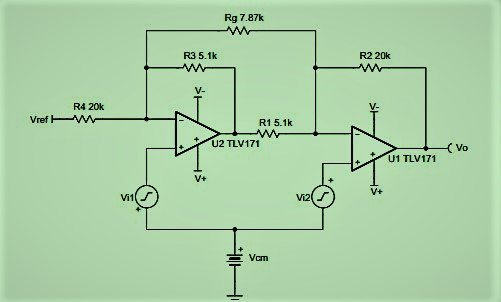
instrumentation amplifier noise analysis
There are particular types of instrumentation-amplifiers available for measuring the weakest signal in a noisy environment. They are known as noise instrumentation-amplifiers. These types of instrumentation amplifiers are used for noise analysis.
Instrumentation amplifier for current sensing
Separate current sensing amplifiers are available in the market for current sensing. But an instrumentation amplifier can also operate current sensing. The primary difference between the two amplifiers is in the input topology.
Frequently Asked Questions
1. Why use an instrumentation amplifier?
Answer: Instrumentation-amplifiers provide higher gain, higher CMRR, higher input impedances, lower output impedances. Thus, we can observe it possesses very close properties of an ideal op-amp. That is why an instrumentation-amplifier is used.
2. When to use an instrumentation amplifier?
Answer: Instrumentation-amplifiers are required every time the user requires a higher gain with better stability of the system to amplify a signal. If the user needed very accurate testing results and measurements, then the instrumentation amplifier comes as a solution.
3. What is an Instrumentation amplifier for load cell?
Answer: The performance of the instrumentation-amplifier gradually increases upon connecting the load cell. The amplifier provides higher CMRR, higher input impedances and thus improves the performance. The detailed connection for the instrumentation amplifier with load cell is shown in the below image. (Point to be noted – Connect all the ground.
4. What is a circuit diagram of an instrumentation amplifier for a biosignal with a gain of a thousand?
Answer: The standard connection of the instrumentation-amplifier provides a specific gain. But adding up an external resistor will give you a boost of thousand.
5. What is the working principle of an instrumentation amplifier?
Answer: The working principle of the instrumentation amplifier is the same as that of a Differential amplifier. It takes the input voltages and amplifies the difference to provide that amplified difference as the output.
Basically: Output = Gain * (Input1 – Input2)
6. What are the advantages of using an instrumentation amplifier over an ordinary differential amplifier in measuring low signals and voltages?
Answer: The advantages are –
- Accuracy and Precision in Measurement: Instrumentation amplifiers are used for testing and measurement purpose. Instrument amplifiers don’t need to match the input impedances. That is why they are so useful for testing. The better parametric values like higher CMRR, high input impedance also gain advantages.
- Gain: Instrumentation amplifiers provide greater values for open-loop growth. It is a more clear advantage which is also an essential requirement for the amplifiers.
- Stability of the System: Inside the Instrumentation Amplifiers, all normal op-amps are connected in negative feedback. As we know, negative feedback stabilises the system; the Instrumentation amplifier’s stability is also high.
- Scalability: Instrumentation amplifiers are incredibly scalable. It provides the option to scale the signal at the input level. That is why the overall amplification is much greater than other amplifiers. The range for scaling is high for that reason also.
- Accessibility: Instrumentation amplifiers come in ICs. There are eight-pin ICs are available. So, it is easier to handle and use. Also, there are not many factors to handle during the amplification. The user has to know the input signal well.
7. Why is CMRR important in instrumentation amplifier?
Answer: CMRR is an essential parameter for measuring the performance of an op-amp. CMRR estimates how much amount of common-mode signal will appear in the output measurement. Instruction Amplifier, being an op-amp explicitly used for measuring and testing purposes, should have the lowest CMRR. It is a basic need for the op-amp; otherwise, it will affect the measurement.
8. What is the difference between an instrumentation amplifier and an inverting adder using two op-amps?
Answer: The difference will be in workings and as well as in the parametric values. Inputs for an instrumentation amplifier is never supplied in the inverting terminals. So, there will be changes. Also, the instrumentation amplifiers have buffer circuits, and the feedbacks of them are negative feedback which increases the system’s stability. So, there are massive deviations from the actual results.
9. What is the purpose of a buffer within an instrumentation amplifier?
Answer: The buffer inside the instrumentation amplifier is helpful in many ways. The buffer increases the input impedance, which is very necessary. It also eliminates the difference between two input voltages; thus, the offset voltage value gets decreased. It also affects the CMRR.
10. What are good rules of thumb for building instrumentation amplifiers?
Answer: There is no such hard and fast rules for designing or building instrumentation amplifiers. But there are some best practices. Some of them are – a) Design the circuit symmetrically, b) Implement the gain in the first stage, c) Considers the factors of CMRR, thermocouple effects and resistance values, d) Design the second stage.
11. How to remove offset voltage in the instrumentation amplifier?
Answer: The offset voltage of any amplifier is removable by feeding an adjustable current from a voltage source. A high-valued resistor should be placed between the current and the op-amp.
For more Electronics related article click here
